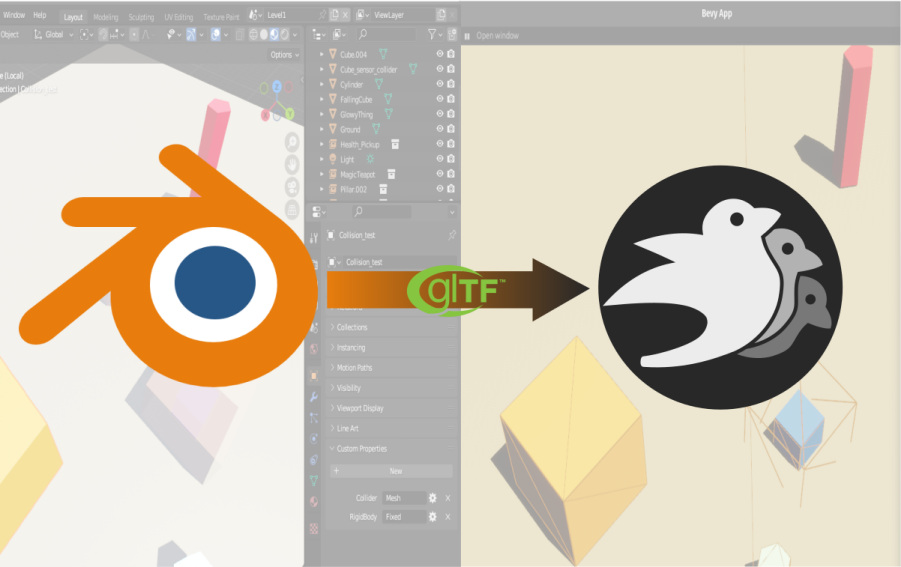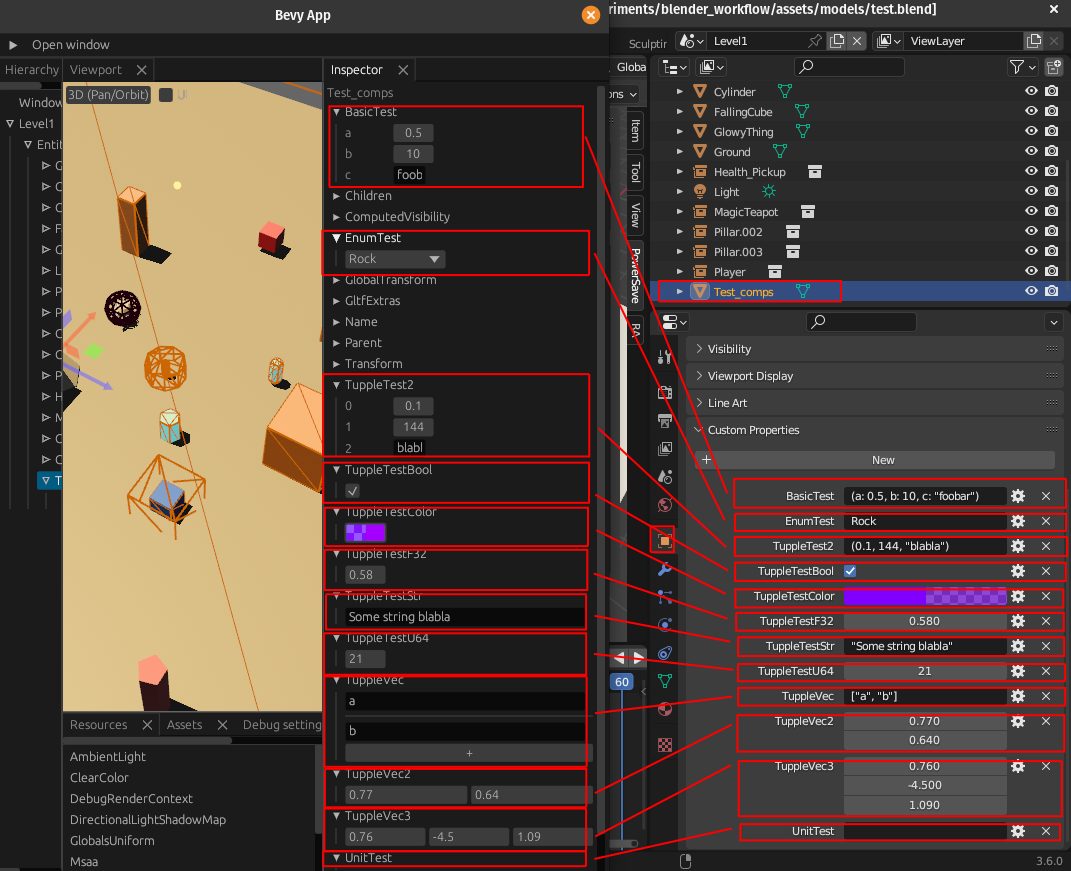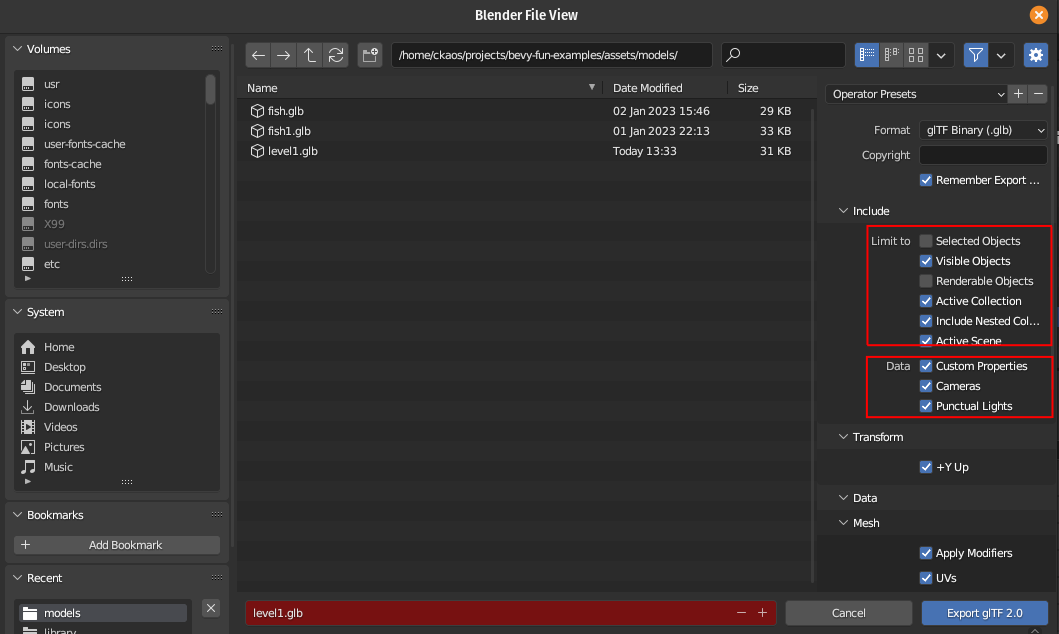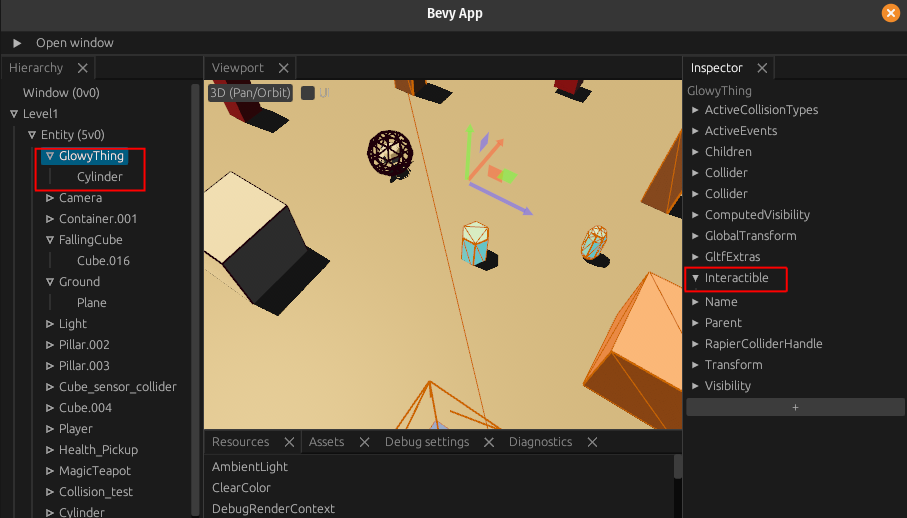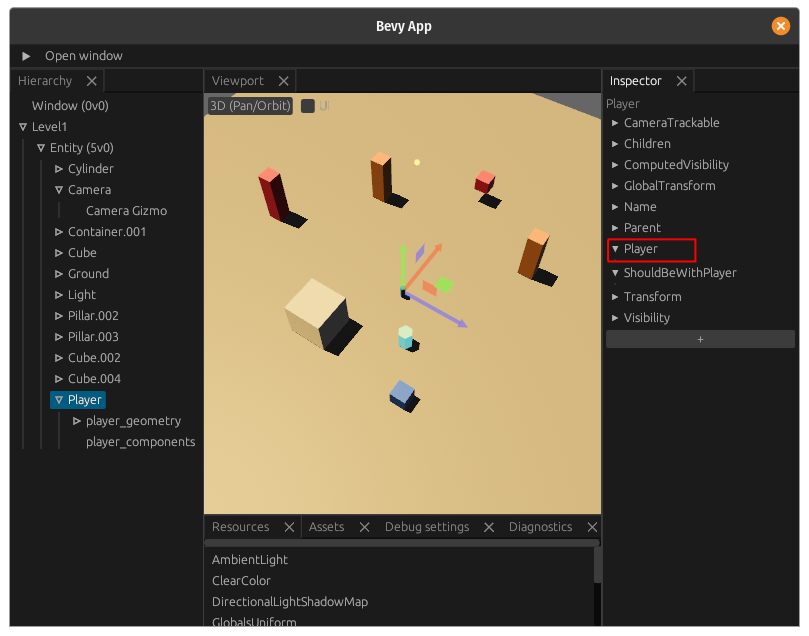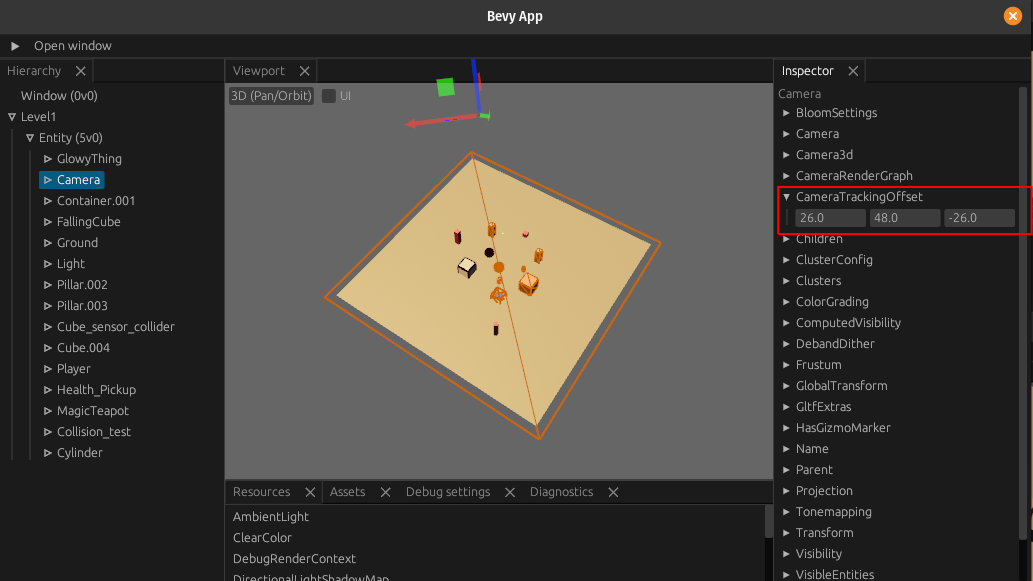* fundamental rewrite of a lot of aspects of the exporter, for cleaner code & to solve a number of issues * set export_separate_dynamic_and_static_objects default to FALSE, as it is an edge use case * added central tracker class, to track the post save & depsgraph changes * auto_export is now more operator centric, with functional undo * now storing add-on configuration at the blend file level (bpy.data.texts) * found source of export issues ! mismatch between context.scene & context.window.scene (the last we can set, the other not) * overhauled & cleaned up materials handling to avoid context issues & reliance on bpy.ops * huge restructure of how temporary scenes are created & cleaned up * added support for exports in edit_mode * updated examples * a lot more * fixes #103 * fixes #112 * fixes #113 * fixes #114 * fixes #115 * fixes #116 |
||
|---|---|---|
| .github/workflows | ||
| crates | ||
| docs | ||
| examples | ||
| tools/gltf_auto_export | ||
| .gitignore | ||
| Cargo.toml | ||
| FUNDING.yml | ||
| LICENSE_APACHE.md | ||
| LICENSE_MIT.md | ||
| LICENSE.md | ||
| README.md | ||
| rust-toolchain.toml | ||
Blender_bevy_components_workflow
Crates & tools for adding components from gltf files in the Bevy game engine.
It enables minimalistic Blender (gltf) centric workflow for Bevy, ie defining entites & their components inside Blender using Blender's objects custom properties. Aka "Blender as editor for Bevy"
It also allows you to setup 'blueprints' in Blender by using collections (the recomended way to go most of the time), or directly on single use objects .
Features
- Useful if you want to use Blender (or any editor allowing to export gltf with configurable gltf_extras) as your Editor
- define Bevy components as custom properties in Blender (some visually , some using RON, though an older JSON version is also available)
- no plugin or extra tools needed in Blender (but I provide a little Blender plugin to auto-export to gltf on save (and more !) if you want !)
- define components in Blender Collections & override any of them in your collection instances if you want
- ability to automatically turn your Blender collections into gltf Blueprints for reuse
- minimal setup & code, you can have something basic running fast
- minimal dependencies: Bevy, Serde & Ron only !
- opensource
Crates
-
bevy_gltf_components This crate allows you to define components direclty inside gltf files and instanciate/inject the components on the Bevy side. There is a video tutorial/explanation if you want, or you can read the crate docs. The examples for the crate are here
-
bevy_gltf_blueprints This crate adds the ability to define Blueprints/Prefabs for Bevy inside gltf files and spawn them in Bevy. With the ability to override and add components when spawning, efficient "level" loading etc There is a video tutorial/explanation for this one too, or you can read the crate docs The examples for the crate are here
Note: this is the recomended crate to use and uses
bevy_gltf_componentsunder the hood
- bevy_gltf_save_load This crate adds the ability to save & load your game state in a relatively simple way, by leveraging the blueprint functionality of bevy_gltf_blueprints to only save a minimal subset of dynamic data, seperating dynamic & static parts of levels etc. The examples for the crate are here
Note: this uses
bevy_gltf_blueprintsunder the hood
Tools
Blender: gltf_auto_export
- for convenience I also added a Blender addon that automatically exports your level/world from Blender to gltf whenever you save your Blend file
- it also supports automatical exports of collections as Gltf blueprints & more !
Please read the README of the add-on for installation & use instructions
Examples
you can find all examples, by crate as seperate crates for clearer dependencies in here
-
- basic use of
bevy_gltf_componentsonly, to spawn entities with components defined inside gltf files
- basic use of
Workflow
The workflow goes as follows (once you got your Bevy code setup)
- create & register all your components you want to be able to set from the Blender side (this is basic Bevy, no specific work needed)
-
Create an object / collection (for reuse) in Blender
-
Go to object properties => add a property, and add your component data
-
unit structs, enums, and more complex strucs / components are all supported, (if the fields are basic data types at least, have not tried more complex ones yet, but should also work)
- for structs with no params (unit structs): use a STRING property & an empty value
- for structs with params: use a RON representation of your fields (see below)
- for tupple strucs you can use any of the built in Blender custom property types: Strings, Booleans, floats, Vectors, etc
In rust:
(the Rust struct for these components for reference is here )
In rust:
(the Rust struct for this component for reference is here )
There is an other examples of using various Component types: Enums, Tupple structs, strucs with fields etc here, even colors, Vecs (arrays), Vec2, Vec3 etc are all supported
-
-
for collections & their instances:
-
I usually create a library scene with nested collections
- the leaf collections are the assets you use in your level
- add an empty called xxxx_components
- add the components as explained in the previous part
-
In the Level/world itself, just create an instance of the collection (standard Blender, ie Shift+A -> collection instance -> pick the collection)
-
-
export your level as a glb/gltf file :
- using Blender's default gltf exporter !!IMPORTANT you need to check the following:
- or much better, using gltf_auto_export
-
load it in Bevy (see the demo main file for this)
-
you should see the components attached to your entities in Bevy
note: you get a warning if there are any unregistered components in your gltf file (they get ignored) you will get a warning per entity
Limitations / issues
- some components have to be defined in
textin Blender, might try using the AppTypeRegistry and some Python code on the Blender side for a nicer UI (although this loses the "fast & easy, no tooling" approach) - Some of
bevy_rapier/physics code / ways to define colliders could perhaps be done better/visually within Blender (currently it also goes via RON)
Future work
- I have a number of other tools/ code helpers that I have not yet included here, because they need cleanup/ might make this example too complex
Credits
- somebody I cannot recall helped me originally with the gltf loading tracker in the Bevy Discord, so thanks ! And if it was you, please let me know so I can give credit where credit is due :)
Contributors
Thanks to all the contributors helping out with this project ! Big kudos to you, contributions are always appreciated ! :)
License
This repo, all its code, contents & assets is Dual-licensed under either of
- Apache License, Version 2.0, (LICENSE-APACHE or https://www.apache.org/licenses/LICENSE-2.0)
- MIT license (LICENSE-MIT or https://opensource.org/licenses/MIT)


